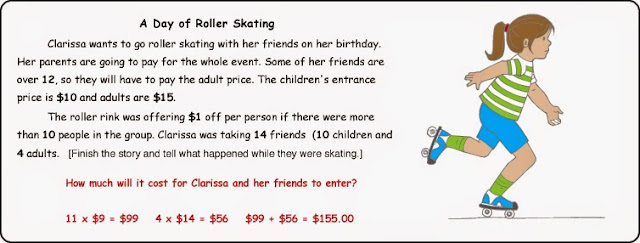On May 31, 1859 Big Ben went into operation in London. Located at the top of the 320-foot-high St. Stephen's Tower, this clock tower rang out over the Houses of Parliament in Westminster, London, for the first time on this day in 1859.
In October 1834, after a fire destroyed much of the Palace of Westminster—the headquarters of the British Parliament—one feature of the design for the new palace was a large clock on top of a tower. The royal astronomer, Sir George Airy, wanted the clock to have pinpoint accuracy, including twice-a-day checks with the Royal Greenwich Observatory.
 |
| Big Ben, London, England |
While many clockmakers saw this goal as impossible, Airy counted on the help of Edmund Beckett Denison, a lawyer known for his expertise in the science of measuring time.
What seemed impossible became a reality less than 25 years later. Read more at www.history.com.
This weekend, Big Ben will celebrate it's 156th birthday!
With Excel Math lessons, students learn to tell time using a variety of digital and analog clocks.
 Take a look at this large online clock developed by Mark Cogan to help students see the current time on an analog or digital clock and then click a button to see the time it will be in 1 hour, 1 minute, 5, 10, 15 or 30 minutes: http://www.oswego.org/ocsd-web/games/classclock/clockres.html
Take a look at this large online clock developed by Mark Cogan to help students see the current time on an analog or digital clock and then click a button to see the time it will be in 1 hour, 1 minute, 5, 10, 15 or 30 minutes: http://www.oswego.org/ocsd-web/games/classclock/clockres.htmlYou could have each student make their own clock with movable hands, match the computer clock for the current time, then change their clock to show the time it will be in 1 hour and click the button on the computer clock to check their answers. Play with two students on one computer so they can see who can get the most correct answers (or who can do it fastest).
 You can also have the students change the time on the clock and then set their own clock for 1 hour later, click the button on the computer clock to check their answers, and continue playing, alternating who gets to choose the new "start" time.
You can also have the students change the time on the clock and then set their own clock for 1 hour later, click the button on the computer clock to check their answers, and continue playing, alternating who gets to choose the new "start" time.  |
| Inca Clock |
For more clock games, check out the following:
Read more . . .
You may also enjoy these articles:



















